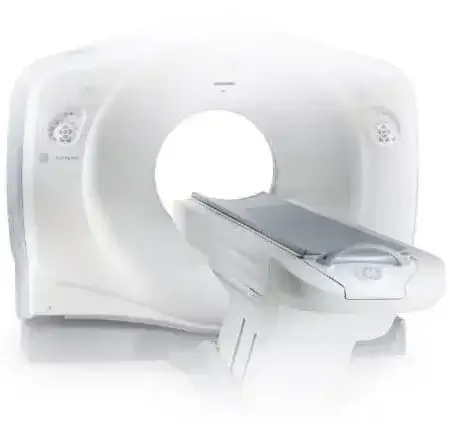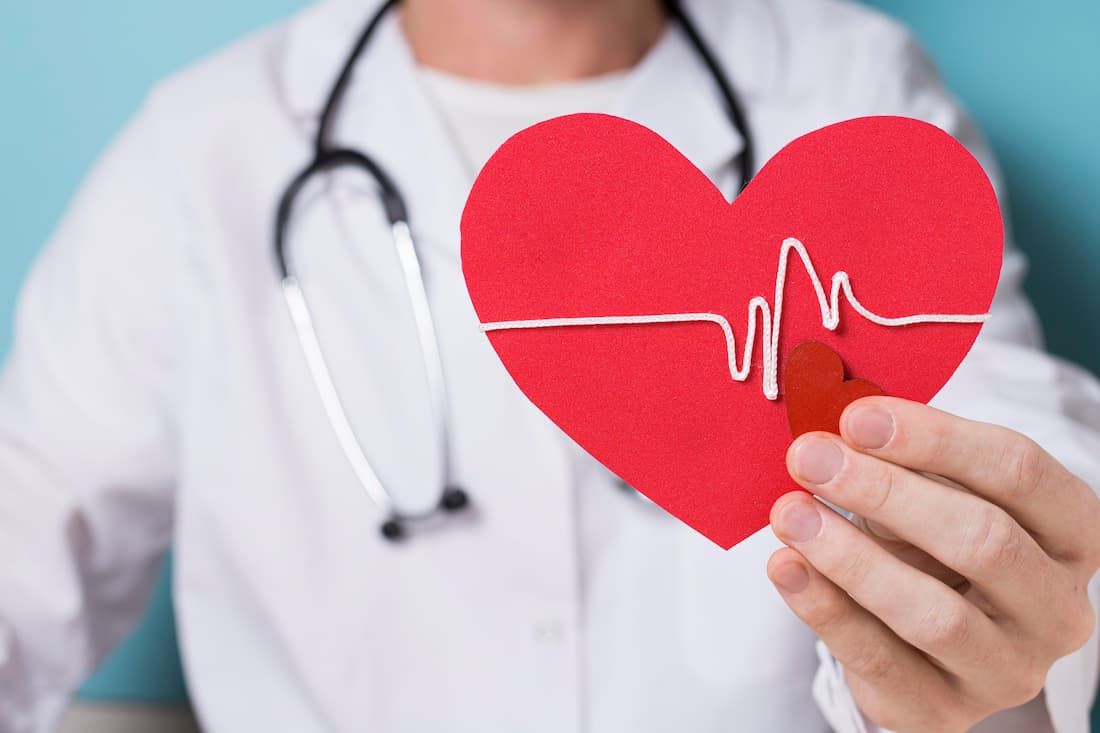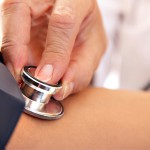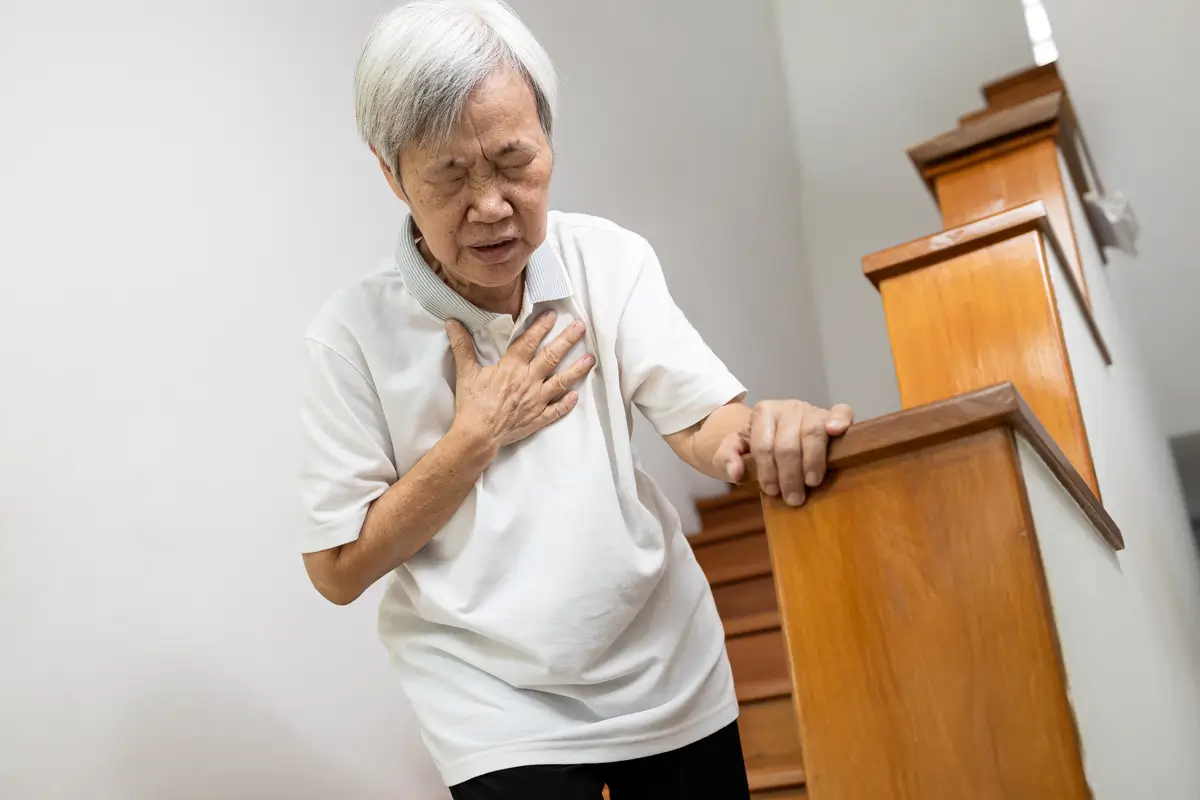CARDIAC COMPUTED TOMOGRAPHY (CT)


Cardiac Computed Tomography or Cardiac Computed Tomography Angiography uses advanced CT technology along with intravenous radio-opaque dye (contrast) to obtain high-resolution 3-dimensional images of the heart. Small electrode patches are placed on the patient’s chest which allows continuous ECG monitoring during the test. The Harley Street Heart & Vascular Centre in Singapore's state-of-the-art facility is equipped with the latest technology and a team of experienced professionals to provide accurate and detailed cardiac computed tomography (CT) scans for the diagnosis and evaluation of various heart conditions.
តើអ្វីទៅជា Cardiac Computed Tomography ហើយតើវាដំណើរការដោយរបៀបណា?
ស្វែងយល់ពីមូលដ្ឋានគ្រឹះនៃការធើ្វcardiac Computed Tomography
ការធ្វើស្កេនបេះដូង ដែលជាទូទៅគេហៅថា ការស្កែនបេះដូង CT (CT angiography) ឬ CCTA (cardiac computed tomography angiography) គឺជាការធ្វើតេស្តមួយដែលប្រើកាំរស្មីដើម្បីបង្កើតរូបភាពដោយឆ្លងកាត់មើលភាពលម្អិតនៃបេះដូង និងចរន្តឈាមជុំវិញសរសៃឈាមក៏ដូចជាលំហូរឈាមទៅកាន់បេះដូង។ បច្ចេកទេសរូបភាពទំនើបនេះជាឧបករណ៍ក្នុងការកំណត់អត្តសញ្ញាណ និងធ្វើរោគវិនិច្ឆ័យជំងឺបេះដូង។
តើរបៀបដែលធើ្វស្កេនបេះដូងអាចជួយក្នុងការធ្វើរោគវិនិច្ឆ័យជំងឺបេះដូងដោយរបៀបណា
ការស្កេនបេះដូងដែលត្រូវបានគេស្គាល់ជាទូទៅថាជាការស្កេនមួយដើរតួនាទីយ៉ាងសំខាន់ក្នុងការធ្វើរោគវិនិច្ឆ័យជំងឺបេះដូង រួមទាំងជំងឺខ្សោយបេះដូងដោយផ្តល់នូវរូបភាពលម្អិតនៃសរសៃឈាមបេះដូង និងការរកឃើញការស្ទះ ការរួមតូច ឬភាពមិនប្រក្រតីផ្សេងទៀតដែលអាចប៉ះពាល់ដល់ការផ្គត់ផ្គង់លំហូរឈាមទៅកាន់បេះដូង។ ទាំងនេះអនុញ្ញាតឱ្យមានការរកឃើញដំបូង និងការអន្តរាគមន៍ទាន់ពេលវេលានៃហានិភ័យនៃការគាំងបេះដូង។
អត្ថប្រយោជន៍នៃការធើ្វស្កេនបេះដូងក្នុងការមើលសរសៃឈាមបេះដូង
ការថតរូបភាពស្កេនរបស់បេះដូងមានអត្ថប្រយោជន៍ជាពិសេសក្នុងការវាយតម្លៃសុខភាពនៃសរសៃឈាមបេះដូង ការរកឃើញវត្តមាននៃកំណកកាល់ស្យូម និងការវាយតម្លៃលំហូរឈាមទៅកាន់បេះដូង នឹងផ្តល់ព័ត៌មានសម្រាប់ការធ្វើរោគវិនិច្ឆ័យត្រឹមត្រូវ ព្រមទាំងផែនការនៃការព្យាបាល។
ហេតុអ្វីត្រូវជ្រើសរើសយកការស្កេនបេះដូងធើ្វជារោគវិនិច្ឆ័យជំងឺបេះដូង?
.webp)
ការប្រៀបធៀបការស្កេនបេះដូងជាមួយនឹងបច្ចេកទេសរូបភាពផ្សេងទៀត។
បើប្រៀបធៀបទៅនឹងបច្ចេកទេសថតរូបភាពផ្សេងទៀត បច្ចេកវិទ្យាស្កេនបេះដូងនេះ ផ្តល់នូវវិធីសាស្រ្តដែលមិនគ្រោះថ្នាក់ និងអាចទុកចិត្តបានសម្រាប់ការមើលឃើញសរសៃឈាមបេះដូង និងកំណត់អត្តសញ្ញាណការស្ទះ ឬការក្រិនសរសៃឈាម។ គឺអាចជួយគ្រូពេទ្យបេះដូងធ្វើការសម្រេចចិត្តប្រកបដោយការយល់ដឹងសម្រាប់ការថែទាំអ្នកជំងឺ។ វាគឺជាការធ្វើតេស្តមួយក្នុងចំណោមការធ្វើតេស្តជាច្រើនសម្រាប់ជំងឺបេះដូងដែលអ្នកជំនាញវេជ្ជសាស្ត្រនឹងណែនាំ។
តួនាទីរបស់ការធើ្វស្កេនបេះដូងក្នុងការរកឃើញការឡើងក្រិននៅក្នុងសរសៃឈាមបេះដូង
ការស្កេនបេះដូងនេះមានប្រសិទ្ធភាពខ្ពស់ក្នុងការរកឃើញវត្តមាននៃការស្ទះនៅក្នុងសរសៃឈាមបេះដូង រួមទាំងការស្ទះកំណកកំបោរដែលអាចបង្ហាញពីហានិភ័យនៃជំងឺបេះដូង និងការស្ទះ ដែលចាំបាច់ត្រូវការការព្យាបាល។
របៀបដែលស្កេនបេះដូងក្នុងការជួយវាយតម្លៃសុខភាពសរសៃឈាមបេះដូង
តាមរយៈការថតរូបភាពសរសៃឈាម និងលំហូរឈាមទៅកាន់បេះដូងបានត្រឹមត្រូវ ការធើ្វស្កេនបេះដូងនេះគឺជួយក្នុងការវាយតម្លៃសុខភាពទូទៅនៃប្រព័ន្ធសរសៃឈាមបេះដូង ដោយផ្តល់នូវការយល់ដឹងដ៏មានតម្លៃចំពោះបញ្ហាដែលអាចកើតមានដូចជាការថយចុះលំហូរឈាម ឬការរួមតូចនៃសរសៃឈាមដែលអាចអោយបេះដូងរបស់អ្នកជំងឺខ្យោយនិងប៉ះពាល់ដល់រចនាសម្ព័ន្ធនៃបេះដូងទាំងមូលផងដែរ។
ស្វែងយល់ពីនីតិវិធី៖ អ្វីដែលត្រូវរំពឹងទុកអំឡុងពេលថត CT Scan បេះដូង
ការរៀបចំសម្រាប់ការស្កែនបេះដូង៖ ការណែនាំ និងការប្រុងប្រយ័ត្ន
មុនពេលស្កេនបេះដូង អ្នកជំងឺនឹងទទួលបានការណែនាំជាក់លាក់សម្រាប់ការរៀបចំ ដែលអាចរួមបញ្ចូលការរឹតបន្តឹងរបបអាហារ ការណែនាំអំពីថ្នាំ និងព័ត៌មានអំពីការទប់ដង្ហើមរបស់អ្នកអំឡុងពេលស្កេន ដើម្បីកាត់បន្ថយនូវលទ្ធផលមិនច្បាស់លាស់មួយចំនួន។
តើការស្កេន CT បេះដូងចំណាយពេលប៉ុន្មាន ហើយតើមានអ្វីកើតឡើងក្នុងអំឡុងពេលដំណើរការ?
ការស្កេនបេះដូង ជាធម្មតាចំណាយពេលខ្លី ក្នុងអំឡុងពេលដែលអ្នកផ្តល់សេវាថែទាំសុខភាពរបស់អ្នកនឹងដាក់អ្នកនៅលើម៉ាស៊ិនស្កេន អ្នកជំងឺត្រូវបានដាក់នៅលើម៉ាស៊ីនស្កេន CT ខណៈពេលដែលរូបភាពនៃបេះដូង និងសរសៃឈាមត្រូវបានថតចាប់យក។ ការប៉ះពាល់នឹងវិទ្យុសកម្មតិចតួច និងការប្រើប្រាស់ថ្នាំពណ៌គឺជាផ្នែកមួយនៃនីតិវិធី។
ហានិភ័យដែលអាចកើតមាន និងផលប៉ះពាល់ដែលទាក់ទងនឹងការថតកាំរស្មីបេះដូង
ជាទូទៅការស្កែនបេះដូងអាចបង្កហានិភ័យតិចតួច រួមទាំងឱកាសកម្រនៃប្រតិកម្មទៅនឹងថ្នាំពណ៌ដែលបានប្រើ និងការប៉ះពាល់នឹងវិទ្យុសកម្ម។ ទោះជាយ៉ាងណាក៏ដោយ អត្ថប្រយោជន៍នៃការធ្វើរោគវិនិច្ឆ័យជំងឺបេះដូងត្រឹមត្រូវគឺផ្តល់នូវការការពារពីហានិភ័យដែលអាចកើតមាន។
តើពេលណាត្រូវបានណែនាំអំពីការថតរូបដោយបេះដូង??
ការចង្អុលបង្ហាញសម្រាប់ការស្កេនបេះដូងក្នុងស្ថានភាពបេះដូងផ្សេងៗ
ការស្កេននេះត្រូវបានណែនាំសម្រាប់ស្ថានភាពបេះដូងផ្សេងៗ រួមទាំងការឈឺទ្រូង សង្ស័យថាមានជំងឺសរសៃឈាមបេះដូង ចង្វាក់បេះដូងមិនទៀងទាត់ និងបន្ទាប់ពីបញ្ហាបេះដូងណាមួយ ដើម្បីវាយតម្លៃស្ថានភាពបេះដូង និងសរសៃឈាម។
តួនាទីរបស់ការស្កេនបេះដូងក្នុងការពិនិត្យរកជំងឺសរសៃឈាមបេះដូង
ការស្កេនបេះដូងជាការប្រើឧបករណ៍ពិនិត្យដ៏មានប្រសិទ្ធភាពសម្រាប់ជំងឺសរសៃឈាមបេះដូង ដោយផ្តល់នូវរូបភាពលម្អិតនៃសរសៃឈាមបេះដូង និងរកឃើញវត្តមាននៃការស្ទះសរសៃឈាម ព្រមទាំងជួយក្នុងការអន្តរាគមន៍ផ្សេងៗ និងការថែទាំបង្ការ។
អត្ថប្រយោជន៍នៃការស្កេនបេះដូងក្នុងការវាយតម្លៃលំហូរឈាម និងមុខងារបេះដូង
ការវាយតម្លៃលំហូរឈាម និងមុខងារបេះដូង គឺជាទិដ្ឋភាពសំខាន់នៃការស្កេនបេះដូង ព្រោះវាអនុញ្ញាតឱ្យអ្នកផ្តល់សេវាថែទាំសុខភាពទទួលបានការយល់ដឹងអំពីប្រសិទ្ធភាពនៃចរន្តឈាម និងដំណើរការទាំងមូលរបស់បេះដូង។ ជួយក្នុងការធ្វើរោគវិនិច្ឆ័យត្រឹមត្រូវ និងផែនការព្យាបាល។
ពិគ្រោះជាមួយអ្នកឯកទេស៖ ស្វែងរកកន្លែងដែលស្កេនបេះដូងត្រឹមត្រូវ។
ការជ្រើសរើសកន្លែងមានទំនុកចិត្តសម្រាប់ការស្កែនបេះដូង
នៅពេលជ្រើសរើសអ្នកផ្តល់សេវាសម្រាប់ការថតរូបភាពបេះដូង វាចាំបាច់ក្នុងការជ្រើសរើសកន្លែងដែលមានទំនុកចិត្តជាមួយអ្នកជំនាញដែលមានបទពិសោធន៍ និងឧបករណ៍ទំនើបបំផុត ដើម្បីធានាបាននូវរូបភាពត្រឹមត្រូវ និងការបកស្រាយលទ្ធផលដែលអាចទុកចិត្តបានសម្រាប់ការថែទាំអ្នកជំងឺដ៏ល្អប្រសើរ។
សំណួរដែលត្រូវសួរនៅពេលជ្រើសរើសអ្នកផ្តល់សេវាសម្រាប់ការថតរូបភាពបេះដូង
មុនពេលធ្វើការស្កេន CT បេះដូង វាជាការសំខាន់ណាស់ដែលត្រូវសាកសួរអំពីគុណភាពនិងបទពិសោធន៍របស់បុគ្គលិកនៃមជ្ឈមណ្ឌលរូបភាព បច្ចេកវិទ្យា និងសមត្ថភាពរបស់ម៉ាស៊ីនស្កេន CT ដំណើរការបកប្រែ និងទំនាក់ទំនងលទ្ធផលនៃការស្កេន។
សារៈសំខាន់នៃការបកស្រាយរបស់អ្នកជំនាញនៃលទ្ធផល CT បេះដូង
ការបកស្រាយពីអ្នកជំនាញនៃលទ្ធផលស្កេនបេះដូងគឺមានសារៈសំខាន់សម្រាប់ការធ្វើរោគវិនិច្ឆ័យត្រឹមត្រូវ និងការរៀបចំផែនការព្យាបាលប្រកបដោយប្រសិទ្ធភាព ដោយសារអ្នកឯកទេសដែលមានបទពិសោធន៍អាចផ្តល់នូវការវិភាគលម្អិត និងការណែនាំដោយផ្អែកលើរូបភាពដ៏ទូលំទូលាយនៃបេះដូង និងសរសៃឈាម។
សេចក្តីសន្និដ្ឋាន
ជាមួយនឹងភាពជឿនលឿននៃបច្ចេកវិទ្យា CT cardiac បានក្លាយជាឧបករណ៍ដែលមិនមានគ្រោះថ្នាក់និងមានប្រសិទ្ធភាពសម្រាប់វាយតម្លៃការវិភាគបេះដូង និងមុខងារ ហើយវាក៏អាចណែនាំការសម្រេចចិត្តព្យាបាលសម្រាប់អ្នកជំងឺដែលមានជំងឺបេះដូងផងដែរ។ លើសពីនេះទៀត CT បេះដូងអាចជួយកំណត់បាននូវហានិភ័យនៃការគាំងបេះដូង និងជំងឺសរសៃឈាមបេះដូងផ្សេងទៀត ដែលនាំទៅដល់ការចាំបាច់នៃការធើ្វអន្តរាគមន៍មុនផ្សេងៗ និងបានលទ្ធផលប្រសើរឡើង។
សរុបមក CT cardiac បានក្លាយជាធាតុផ្សំដ៏សំខាន់នៃបច្ចេកទេសបេះដូងទំនើប ដោយផ្តល់នូវមធ្យោបាយសុវត្ថិភាព និងមានប្រសិទ្ធភាពក្នុងការធ្វើរោគវិនិច្ឆ័យ និងគ្រប់គ្រងស្ថានភាពសរសៃឈាមបេះដូង។ ការប្រើប្រាស់យ៉ាងទូលំទូលាយ និងការបន្តជឿនលឿនក្នុងបច្ចេកវិជ្ជាធ្វើឱ្យវាក្លាយជាឧបករណ៍សំខាន់សម្រាប់ការវាយតម្លៃដ៏ទូលំទូលាយនៃសុខភាពបេះដូង។
Frequently Asked Questions About Cardiac Computed Tomography
Below are some of the most frequently asked questions about cardiac computed tomography answered by one of our resident cardiologists, Dr. Michael Ross MacDonald.
What Is Cardiac Computed Tomography Angiography (CCTA)?
Cardiac computed tomography angiography, also known as CCTA, is a non-invasive imaging test that uses computerised tomography technology to utilise a piece of special X-ray equipment to produce detailed pictures of the heart, blood vessels that go the heart and arteries that are even close to the heart.
How Does CCTA Differ From Coronary Angiogram?
CCTA is a non-invasive imaging test that uses a CT scanner to obtain images of the heart and blood vessels, while a coronary angiogram is an invasive procedure that involves threading a catheter through the blood vessels into the heart and contrast dye is injected to take X-ray images.
What Is the Purpose of a CCTA?
The purpose of a CCTA is to obtain detailed cardiovascular imaging or images of the heart to diagnose and evaluate coronary artery disease, congenital heart defects, and other cardiovascular conditions.
When Is a CCTA Recommended?
A CCTA may be recommended if a patient has symptoms of heart disease, such as chest pain or shortness of breath. You may need a CCTA to assess the entire cardiac condition of the heart and blood vessels after a heart attack or other cardiac event.
What Is the Role of Calcium in a CCTA?
Calcium scoring is a part of CCTA and it measures the amount of calcified plaque in the coronary arteries, providing information about the risk of heart disease and potential blockages from substances including calcium. Calcified plaque may happen with calcium deposits over time.
Calcium scoring may show a high or low calcium score. However, a high calcium score does not necessarily mean you will experience a heart attack, and a low calcium score does not guarantee immunity from cardiovascular events.
Are There Any Risks Associated With CCTA?
While CCTA is generally safe, there is a small risk of allergic reactions to the contrast dye used, and in some cases, the contrast dye may affect the CT images. Additionally, there is minimal exposure to radiation during the procedure.
Can CCTA Be Performed on Patients With a Pacemaker or Other Implanted Devices?
Patients with pacemakers or other implanted devices may not be able to undergo a CCTA, as the metal in the devices may interfere with the CT examination. However, each case is evaluated individually.
How Long Does a CCTA Procedure Take?
The CCTA procedure generally takes about 10-30 minutes, depending on the type of scanner used and the complexity of the imaging.
What Can I Expect During a CCTA Procedure?
During a CCTA, you will be positioned on the CT scanner table, and electrodes will be attached to your chest to monitor your heart rate. The table will move through the scanner while it takes images of your heart and blood vessels.
Can a CCTA Identify Cardiovascular Disease?
Yes, CCTA can provide detailed images of the heart and blood vessels, allowing for the identification and assessment of cardiovascular disease, including blockages in the coronary arteries and other heart conditions.


